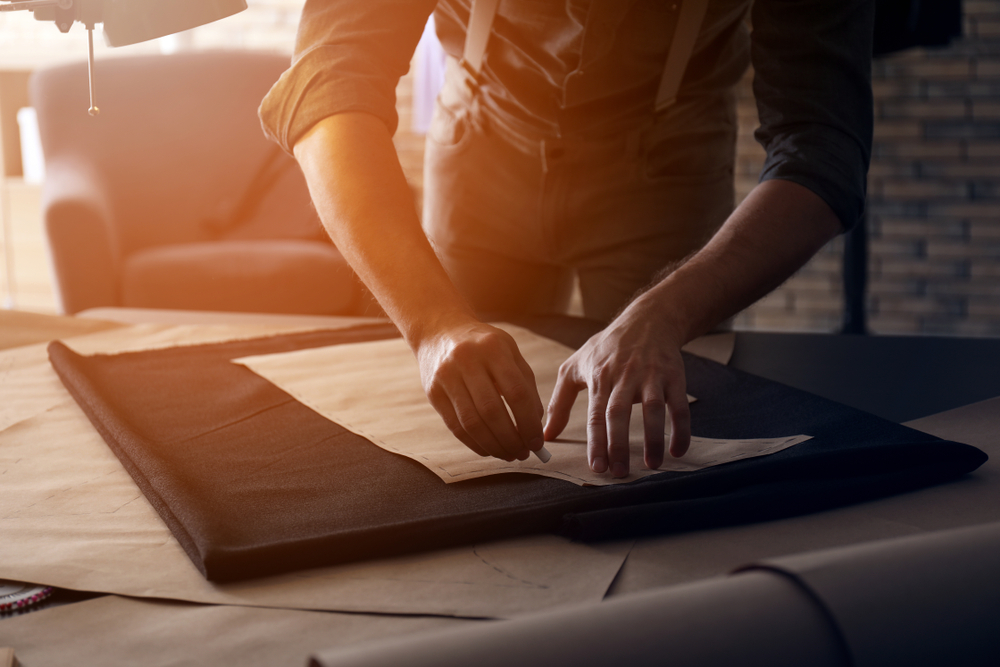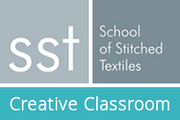- Orientation
- Top 10 Best Online Sewing Classes 2024
- 1. Best Beginner Class: Sewing Essentials
- 2. Best Mending Class: How to Mend Clothing
- 3. Best Pattern Class: Sewing Patterns 101: Learn to Read Sewing Patterns
- 4. Best Construction Class: Make Your Own Clothing – Introduction to Garment Construction
- 5. Best Hand-Sewing Class: Learn Mindful Stitch Techniques
- 6. Best Design Class: Designing and Creating Trousers
- 7. Best Embroidery Class: Embroidery Sampler
- 8. Best Quilting Class: Sew a Patchwork Quilt by Hand or Machine
- 9. Best Clothing Class: Beginners Sew Your Own Clothes Without Sewing Patterns
- 10. Best Corset Class: Corset Academy
- Frequently Asked Questions About Sewing
- Extra Credit
- Sew Now It’s up to You
Recently, there has been a resurgence of people learning sewing and other needlecrafts. Instagram and YouTube are blowing up with gorgeous DIY projects, and maybe you’ve been keeping a secret Pinterest board of all the projects you’d like to try someday. Well, today could be that day.
In this article, we look at some of the online sewing classes currently available to help you decide which one will work best for you, no matter what kind of sewing it is you’re interested in. We’ll then explore some ‘extra credit’ information to help you pick the right course for you, as well as answering the most frequently asked questions.
It’s time to stop drooling over the creations of others and start developing the skills you need to create your own.
Orientation
Sewing used to be a common skill. Go back in time a few decades and nearly every family would have at least one skilled home sewist. As cheap, ready-made fashion became more widespread (bringing plenty of serious consequences), the skill started to die out. Now, instead of repairing or upcycling our clothing and home textiles, we toss them out. But while it may feel like more of a niche hobby, sewing has recently seen a resurgence in popularity.
If you’re considering a sewing class, here’s what you’ll need to consider.
Style & Interests
Learning to sew sets you free from depending on fast fashion. Instead of hoping that you’ll find something that fits your style and body type, you’ll have the skills to create your own customized pieces. You can also tailor and mend your existing clothing so that it fits you better and lasts longer. This is better for the planet, and also incredibly rewarding on a personal level.
And sewing isn’t just about clothing, either. There are courses on our list to help make your textile dreams come true, whether you want to make clothing, create quilts, or make works of art through embroidery.
Instructor & Learning Style
Sometimes it can be tough to learn a hands-on craft without an instructor right there with you. Some people are good at learning by watching, but others may feel that they need that human touch to really grasp a new skill. If you’re one of those people, you might want to choose an online sewing class that has more interactive features, like a discussion forum or video chatting with the instructor.
Materials
If you already have access to a sewing machine, that opens up more classes to you, since machine sewing is more popular. However, even if you have a machine, learning at least a few hand sewing basics is important. Some detailed work needs to be done by hand, and if you keep a small sewing kit in your bag, you’ll never be slowed down by popped buttons and torn hems while you’re on the go.
Once you start developing your sewing skills, there is a whole world of resources out there to help you hone in on different projects that you want to do. The world of YouTube is full of vloggers showing their unique sewing projects, and those can be a great inspiration to you. You can sometimes use these videos to beef up particular skills as well.
With the above in mind, here are the best online sewing classes that money can buy (and some bonus, free options, too).
Top 10 Best Online Sewing Classes 2024
1. Best Beginner Class: Sewing Essentials
- 2.5 h $49.99
- Course Highlights
- Includes a variety of downloadable resources
- Skill Level: beginner
- Equipment: machine, fabric, scissors
Why we like it
This course takes you through a wide range of basic skills and techniques, making it the most beginner-friendly course.
Course Review
Ashley Hough, an instructor from the National Sewing Circle provides a quick yet comprehensive starter guide for new sewists. In this course, she helps her students understand basic sewing terminology and concepts. She covers topics like how to choose the right fabric for your project and how to cut your patterns.
Her course also encourages you to get to know your individual sewing machine since they vary greatly between brands and models. How to choose the right type of needles and thread for your project is discussed, too.
The class culminates in a simple beginner project: sewing a pouch to keep all your sewing tools in. The price of the class includes the video lessons, but also comes with downloadable resources, such as the pattern for the sewing pouch. It’s a helpful class no matter what kind of sewing project you plan on doing and will give you a firm foundation in the basic skills you need to start.
Who Is It For?
If you would love to give sewing a try but are starting completely at square one, Hough’s course is an approachable way to get you started. The most basic topics that you might be afraid to ask someone are covered. She doesn’t make any assumptions about you having prior knowledge.
Of course, you do need to have a sewing machine, since the course doesn’t cover any hand sewing technique. If you want to learn some hand sewing basics, you can check out the course from The School of Stitched Textiles. This course will also be a little too rudimentary for anyone that’s familiar with basic sewing concepts.
Pros
- Helps you understand fabric and tools
- Comes with printable materials
- Demonstrates starter skills
- Explains sewing terminology
Cons
- Requires a sewing machine
- Too basic for many people
2. Best Mending Class: How to Mend Clothing
- 1 h Free with Creative Bug membership
- Course Highlights
- Presents an eco-friendly approach to sewing
- Skill Level: Beginner to intermediate
- Equipment: needles, thread, scrap fabric, crochet hook
Why we like it
Learning to mend your clothing is a low-pressure and eco-friendly way to start sewing, and this course shows you a variety of methods for saving your clothes.
Course Review
Cal Patch, your aptly named artist-instructor wants you to make your favorite clothing last as long as possible. Her three-part course walks you through several different methods of mending so that no matter what needs fixing in your closet, you’ll find a method that works for you.
Patch embraces the idea that mending isn’t shameful. It’s something that personalizes and even beautifies our clothing. She teaches the concept of visible mending and patching. Her class focuses a lot on mending techniques for knitwear, such as darning. While this isn’t straightforward sewing, it does help you to understand types of fabric and garment construction better.
This course is a fun look at what may seem to be a dry subject. Along the way, it teaches some important needlecraft skills and techniques while encouraging joy and creativity in even mundane tasks.
Who Is It For?
If you’re mainly interested in learning sewing to maintain your wardrobe, this is a great course option. Even people with some sewing experience can benefit from learning less common techniques like darning. For people who already knit or crochet, but lack sewing skills, this class can help you cross over. Of course, if you have no crochet skills, you may be a little intimidated.
This class teaches valuable skills that can save you money and keep your clothes out of landfills. Your favorite sweater or pair of jeans can be saved with the information in this course. The nitty-gritty of creating actual clothing construction isn’t touched on in this class; if you want to jump into that right away, you may prefer a course, like this one from Udemy that teaches you to sew without a pattern.
Pros
- Teaches niche techniques like darning
- Helps you extend the life of clothes
- Encourages creative fun
Cons
- More crochet oriented
- Doesn’t teach you how to make things from scratch
3. Best Pattern Class: Sewing Patterns 101: Learn to Read Sewing Patterns
- 1 h Free with SkillShare membership
- Course Highlights
- Comprehensive exploration of everything related to patterns
- Skill Level: Beginner to intermediate
- Equipment: a commercial pattern
Why we like it
Patterns can be confusing, but this course helps you crack the code so you can sew almost anything.
Course Review
In theory, patterns help you turn a pile of fabric into a fabulous project. But all the symbols and grading lines can be intimidating to a newer sewist. This course helps demystify commercial sewing patterns.
This class walks you through how to read all the information on a pattern and what that means for you, the sewist. This course also covers topics like how to understand and use vintage patterns, PDF patterns, and even patterns printed in books. The instructor also gives some helpful tips on how to store patterns after you’ve cut and used them.
It culminates in a final project where you take a pattern of your choosing and interpret it by filling out a downloadable worksheet provided by the teacher. This can help give you confidence before you start on your first big patterned project. Students are also encouraged to share questions and comments in the discussion forum with each other, and the teacher often follows up on these discussions as well.
Who Is It For?
If you already have some basic sewing skills and are ready to take things to the next level by sewing your own clothing, this could be a valuable course for you. No matter what kind of pattern you want to tackle, there are valuable suggestions for how to approach things. In just an hour-long class, topics like size adjustment aren’t covered, but it gives you a good starting point to understanding patterns.
People with intermediate skill levels may also find this course useful if they feel like their pattern reading skills are weak. If you’ve only worked with one kind of pattern in the past, this can also help expand your repertoire. For actual help sewing though, you’ll need to look elsewhere.
Pros
- Covers various forms of patterns
- Comprehensive explanation of terms
- Interactive features
- Downloadable resources
Cons
- Doesn’t teach actual sewing technique
- Doesn’t cover size adjustment
4. Best Construction Class: Make Your Own Clothing – Introduction to Garment Construction
- 1 h Free with SkillShare subscription
- Course Highlights
- Dives into the fundamentals of clothing construction
- Skill Level: Intermediate
- Equipment: machine, fabric, scissors, pins, measuring tools
Why we like it
This class helps you understand the fundamentals of how clothing is created, allowing you to expand your sewing beyond patterns.
Course Review
Once you have a few projects under your belt, you might find yourself itching to expand your creativity. This class helps you dig into the nitty-gritty of how clothing is constructed and how you can start to draft and design your own items.
Hosted by Josh McKinley, the runner-up of Project Runway season 9, this class starts by showing you how to make a body block based on your measurements. This is used as the basis for patterning the class project: a vest. He takes you through the basics of how to draft a pattern around your body block to create this garment.
The course also gives time to how clothing is finished, showing more advanced seam finishing techniques often found in high-end tailoring. He demonstrates several different ways to finish your clothing with a more professional look.
Who Is It For?
You’ll walk away from this class with a greater understanding of how clothing is made and what distinguishes a quality piece from a mediocre one. If you want to start dabbling in design or just want to give your pieces a more professional finish, you can benefit from this course.
There is a lot covered in this class that’s just over an hour-long, and some things go by a little too quickly. For a more in-depth course about design and fit, you may prefer the one offered by Hong Kong Polytechnic. For example, in this course, by doing a vest, you get a good understanding of drafting to fit the torso, but sleeves and hips aren’t really covered. But still, this is a good overview of skills you can continue to develop and an introduction to somewhat more advanced techniques.
Pros
- Helps you understand clothing construction
- Teaches you to create and draft from a body block
- Demonstrates multiple finishing techniques
Cons
- Doesn’t go in-depth for many techniques
- Doesn’t cover sleeves or lower body
5. Best Hand-Sewing Class: Learn Mindful Stitch Techniques
- 1 h Free
- Course Highlights
- Combines mindfulness with sewing for a relaxing hobby
- Skill Level: beginner
- Equipment: needle, thread, scissors, pins
Why we like it
This course combines mindfulness and meditation with basic hand-stitching techniques for a low-pressure class.
Course Review
From the School of Stitched Textiles comes this relaxing course in hand stitching. The host of the course, Gail, slowly walks you through some of the very basics of hand sewing, such as how to select your needle and threads, how to start a row of stitches, and how to gather the fabric on your needle for running stitches.
The class encourages you to experiment with different lengths of stitches in different colors to create something simple yet beautiful. Imperfection is encouraged to add to the rustic homespun charm. You can practice your sewing in real-time with your teacher while observing her technique.
The final step of the course is to turn your decoratively stitched fabric into a cushion. The project is finished by machine in the video, but you can use the hand sewing techniques you’ve learned to finish it by hand or skip turning it into a cushion and just use it as a practice piece.
Who Is It For?
Often, we start new hobbies to help us relieve stress or get away from our busy schedules. Hand sewing is especially great for that since it’s a way to keep your hands occupied quietly, allowing you to sit on the couch and listen to music or your favorite podcast while you work. If you’re a bit of a perfectionist, this course’s gentle and creative nature can help you unwind without worrying about getting everything perfect the first time.
If you don’t want to invest in a machine, but want to start learning how to do basic sewing, this course is approachable and easy. It teaches you some of the most basic essentials. Of course, with such a surface-level class, you may not be ready to jump into hand sewing clothing or doing embroidery yet. There are a few essential stitches and techniques that the class doesn’t get to.
Pros
- Budget-conscious class
- Relaxing and calm
- Teaches beginner stitches
- Demonstrates basic technique
Cons
- Doesn’t show many stitches
- Uses machine finishing, not hand
6. Best Design Class: Designing and Creating Trousers
- 15-25 h Free, or $99 with completion certificate
- Course Highlights
- Offers professional-level training
- Skill Level: Intermediate to advanced
- Equipment: machine or hand tools, fabric, scissors
Why we like it
For professional-level training, this Hong Kong Polytechnic course is like a masterclass in construction and design.
Course Review
Hong Kong is famous for many things, including its high-quality tailoring. Bespoke suit shops and couture both find a home there, and in this course by the Hong Kong Polytechnic Institute, you can soak up some of that knowledge.
This is one of the most comprehensive classes on our list. Over the course of five weeks, you will study the basics of design and pattern drafting, focusing on pants. The nuances of fit and creating garments based on body measurements are covered in-depth. The course also digs into the history of design, garment closures and finishes, as well as fabric choices.
You will interact with your four course instructors over the five weeks of the class. It’s more interactive than most online courses. Your studies culminate in the presentation of a fit sample and designs that you’ve created during the class.
Who Is It For?
This is truly a masterclass in understanding fit and design. Anyone can enroll, but it’s geared toward those looking to work professionally in fashion (hence the available certification). If you’re already experienced in sewing, but looking to pursue it as a job, or just get your skills to a more professional level, you will find this course to be very valuable.
While it does require a greater time commitment than many courses (3-5 hours a week), that extra time lets you get a better understanding of the subject. You also are held more accountable in this course by interacting with your instructors and presenting a final project for evaluation. If you’re a beginner or looking for something more casual, it’s probably not for you. For an introductory course that you can take at your own pace, try the Introduction to Garment Construction class.
Pros
- Professional-level instruction
- A project with real-world application
- In-depth study of design
- Professional certification available
Cons
- Must have strong sewing skills
- Bigger time commitment
- Can’t take class at your own pace
7. Best Embroidery Class: Embroidery Sampler
- 1 h Free with Creative Bug Subscription
- Course Highlights
- Clear and direct insight into beginner embroidery
- Skill Level: beginner
- Equipment: needle, thread, fabric, scissors, embroidery hoop
Why we like it
Even if you’ve never picked up a needle before, you can start your embroidery journey today with this class.
Course Review
As an absolute beginner, you might wonder how to get started creating embroidery designs. You may even wonder about the basic mechanics of threading a needle. Fortunately, this class anticipates those needs.
Starting with the basic techniques for placing your thread in an embroidery hoop and threading your needle, this course is very approachable for anyone. The instructor even takes you through some of the different kinds of thread and how to choose which one works best for your project. From there, you start learning a variety of embroidery stitches that you can use to create art from thread.
The one-hour class is broken up into 17 mini-lessons, so you can go back to whichever stitch you need more practice with and watch it over again. There is also the option to interact with other students in the comments section, sharing your experiences and challenges.
Who Is It For?
If you’ve been admiring embroidery art and want to make your own wall-hangings, or even jazz up the cuffs and collars of your clothing with a fun and unique touch, this embroidery class is a great starting point in your journey. If you’re a hand-sewist looking to learn more stitches and beef up your skills, you might also benefit from this class.
This is the best option for very beginner-level sewists, but if you already know some of the basic embroidery stitches, you might find it somewhat rudimentary. Topics like which fabrics take embroidery best and how to transfer patterns, or even design your own, aren’t touched on in this short class.
Pros
- Simple and straightforward for beginners
- Helps you understand embroidery thread
- Teaches you many essential stitches
Cons
- Doesn’t cover patterns
- Too basic if you have a little experience
8. Best Quilting Class: Sew a Patchwork Quilt by Hand or Machine
- 2.5 h $29.99
- Course Highlights
- Gives you all the knowledge needed to work on your first quilt
- Skill Level: beginner
- Equipment: machine or hand tools, fabric, scissors
Why we like it
This course walks you through everything you need to make your first quilt, whether by hand or machine.
Course Review
Taught by an experienced sewist, this patchwork quilting class gives you the fundamental knowledge you need to finally tackle your first quilt. It’s designed for a variety of students to benefit from. Even if you’ve never sewn before or only have hand sewing tools, you can make a quilt.
Starting with the basics of fabric, you learn how to choose the right type for your project and cut it out. This course shows you how to piece your quilt together, the types of stitching to use for assembly, and how to bind the edges when you’re done. Each step is shown with machine and hand techniques.
It’s also nice to have the instructor show you a variety of quilts that she’s made over many years. This can help give you inspiration for your own designs and assures you that you really are learning from an expert.
Who Is It For?
If you want to make a quilt, maybe as a work of domestic art, or as a sentimental memory-keeper, you will enjoy this class. It helps you start with figuring out how to plan your quilts as you design how many blocks you want to have and what size they’ll be. It’s slower in pace since both machine and hand techniques are shown for each part, but that can be extremely helpful if you’re new to sewing and haven’t laid out a lot of money on a machine yet.
This course doesn’t have the highest production value and instead has more of a homespun feel. While this can be a little off-putting if you’re used to vloggers with professional lighting and sound equipment, it’s good enough to give you all the information you need. Still, if you’re craving some better shots of hand sewing work, you can always enjoy the class by The School of Stitched Textiles as well. Still, this teacher knows her stuff and gives you a great jumping-off point for all your quilting desires.
Pros
- Shows hand and machine options
- Helps you design your quilt
- Gives you each step of the process
- Covers fabric information
Cons
- Slower paced
- Not professional production value
9. Best Clothing Class: Beginners Sew Your Own Clothes Without Sewing Patterns
- 1 h $129.99
- Course Highlights
- A fast-paced look at sewing without patterns
- Skill Level: beginner
- Equipment: machine, fabric, scissors, clothing to copy
Why we like it
By using your existing clothing and some basic measurements, this class helps you learn about garment construction and work without a pattern.
Course Review
This course shows you a few simple ways to expand your wardrobe by using a few basic measurements to create clothing. For ultra beginners, there’s no need for expensive and confusing commercial patterns or complicated drafting techniques. It’s all based on ratios based on your body measurements or on the clothing you already have that fits you well.
Designed for beginners sewing their first garment, this fast-paced course takes you through some basic sewing with a machine first. After that, you dive into creating 4 different garments: a top, a dress, trousers, and a more detailed ruffle dress.
The instructor uses a combination of clothing “cloning” (using the shapes and seams of existing garments) and freehand cutting to demystify sewing. It’s a very laid-back course without difficult tailoring or complicated techniques. Even someone who has never sewed before can make a wearable garment after taking this class.
Who Is It For?
If you have access to a sewing machine but have almost zero experience with sewing, this class is for you. It’s a great way to make sewing seem less daunting and gives you the satisfaction of creating something at the very beginning. Instead of starting out with cushions, as in many sewing courses, you can make something fun to wear.
This course isn’t really suited to anyone who has some knowledge of technique already, and indeed it’s very light in the technique it teaches. Things like how to fit a garment properly are overlooked in favor of choosing oversized silhouettes and elastic to give shape. It’s more for casual DIY fun than people looking to bone up on their skills. If you’re looking for a better jumping-off point, you may prefer a beginner technique class.
Pros
- Easy and fun
- Helps you sew clothing right away
- Not intimidating for beginners
Cons
- Weak on technique
- No fitting instruction
10. Best Corset Class: Corset Academy
- 1+ h Free, with membership tiers up to $49.99
- Course Highlights
- The go-to resource for learning corsetry
- Skill Level: Intermediate to advanced
- Equipment: machine, fabric, scissors, corset tools
Why we like it
For diving into the world of bridal gowns and corsetry, this course offers multiple classes on a subscription basis.
Course Review
Corset academy isn’t just one class; it’s a full catalog that you can subscribe to for continuous learning. There are three different membership tiers that allow you access to different content, but you can also purchase one-off classes on a particular topic.
The focus of their classes is on creating couture quality dresses, wedding gowns, and corsetry. All of these are more advanced techniques, but even if you’ve never made a corset before, there are introductory units that help you come to grips with this unique garment. Each class comes with printable resources that you can reference again and again, and once you reach the intermediate level, you have access to patterning software to help you customize garments.
In the higher tiers, more advanced techniques and patterns are taught. These courses also offer a diploma certificate that you can add to your resume if you are pursuing a career in fashion or design.
Who Is It For?
If you have some basic sewing skills, but you’re eager to try something a little more glamorous and complicated, Corset Academy’s beginner subscription can help you start learning the more niche skillset of corset and gown making. This is great if you want to make a wedding dress for yourself or a close friend with upcoming nuptials, or if historical support garments like corsets have always fascinated you.
Unfortunately, the beginner’s course is only accessible for 30 days once you sign up, so you’ll need to make the most of your time. The course also heavily focuses on wedding and formal wear, so if you’re interested in corsetry more for lingerie or historical reenactment purposes, Corset Academy doesn’t quite live up to its name in terms of variety.
Pros
- Three subscription tiers for various levels
- Downloadable resources
- Multiple bridal patterns and techniques
Cons
- Beginner tier only gives 30-day access
- Limited to formal wear corset styles
Frequently Asked Questions About Sewing
If you’re still hesitant to jump into the world of sewing, we hope we can reassure you and answer any lingering questions here.
Thanks to the internet, it’s easier than ever to learn things from home, sometimes even for free. Sewing is not an intuitive skill, so having someone show you the basics can be really useful even if they aren’t in the room with you.
Getting a little bit of instruction will save you a lot of frustration, confusion, and wasted materials. So yes, you can learn sewing on your own from home thanks to online lessons.
No matter your gender, you can enjoy the art of sewing. Several of the courses on our list have male instructors, and of course, many famous fashion designers have been male. A few of our recommended courses do focus on more traditionally female garments, but sewing, patterning, and fit techniques can be applied to anyone.
Whether your aspirations are to make a really cool Halloween costume, mend your torn-up clothes, or have a sharp-looking bespoke wardrobe, you can sew as a guy. The only thing holding you back is your own self-doubt.
You absolutely should be sewing if you have a hard time finding great clothes to flatter your body in stores. By learning sewing skills, you have the ability to build your own custom wardrobe and tailor store-bought clothing to fit you better.
The biggest hurdle may be using commercial patterns if you have body proportions that aren’t considered standard. There are several courses on our list that will help you learn to draft your own patterns or adjust commercial ones. Making a mock-up out of inexpensive fabric can help you adjust fit without wasting your nice material.
If you’re just trying out sewing for the first time, there’s no need to commit to purchasing a sewing machine. You aren’t necessarily sure if sewing is going to be a hobby for you yet, so it might not be worth investing hundreds of dollars on a machine.
Hand stitches can be just as strong as machine stitches. They can also look better depending on what kind of garment you’re making.
You should set a goal from the beginning. Do you want to make a Marie Antoinette gown or a three-piece suit? That is the ultimate goal, but that’s not where you start. Start with small, digestible projects like a basic shirt or skirt to work your way up to that dream. This will help keep you from getting discouraged and ruining expensive supplies.
Some of our courses are designed for people who have never sewed before, so start with one of those. Get some basic tools and a few yards of inexpensive material and follow along to a tutorial. And always remember to measure twice, cut once.
Extra Credit
There are a couple of things you’ll need to evaluate before you pick a class. You should consider whether a class is going to suit your skill level, help you learn the kind of sewing you really want to do, and if you have the tools and materials you’ll need to complete the course.

Your Skill Level
You’ll need to honestly evaluate yourself here. If you’ve never picked up a needle, it’s easy to recognize that you’re a beginner, but if you have a little experience, maybe mending or making a quick and dirty Halloween costume here and there, you might wonder if you should start with something more challenging.
If you’re in doubt, there’s no shame in starting with a basic beginner course. Many self-taught sewists have bad habits that can easily be corrected when they’re given the right instruction. Beefing up those fundamental skills will help you go much further.
If you have that foundation, you can start branching out and taking classes that teach you more challenging skills or focus on a special technique you’ve been eager to learn.
What Kind of Sewing?
Saying you want to learn sewing is like saying you want to learn art. There are hundreds of different kinds of sewing. Many people want to learn apparel or clothing sewing. But even in that realm, there are many varieties. Men’s tailoring is very different from corset making, for example.
Beyond clothing, there are other forms of sewing that make great hobbies too. Embroidery is a fun way to create needle art or jazz up your clothing. Quilting is an incredibly expressive and artistic form of sewing. You could even make plushies, household linens, or tote bags: anything made of cloth is possible.
Investing in Materials
If you’re just trying to sew for the first time, you probably don’t want to invest in expensive equipment. If you don’t have access to a sewing machine, there’s no need to stress. Hand sewing is just as strong and effective as machine sewing; it was done for thousands of years before the machine was invented, after all. It will just take a little longer to do.
Some courses will be geared toward using a sewing machine, but others are all about hand sewing. All you really need to get started sewing is some inexpensive fabric (cotton is usually appropriate for most beginner projects), a needle, thread, pins, and some sharp scissors.
If you’re learning more specific techniques, like embroidery, you may need some other equipment. In our guide, we list some of the equipment requirements for each course. The courses themselves give you a more detailed run-down of everything you need to complete the class.
Sew Now It’s up to You
Sewing is a great hobby that for some people can even turn into a career. But if there’s no one in your life who already knows how to sew, you might struggle to get started. Fortunately, whether you want to learn quilting, embroidery, or couture design, there are classes on our list that can help you get started, or even take your basic skills to the next level.
We hope you now feel ready to take those next steps and start your sewing journey. Soon you’ll be expressing yourself through your own amazing fabric creations.







